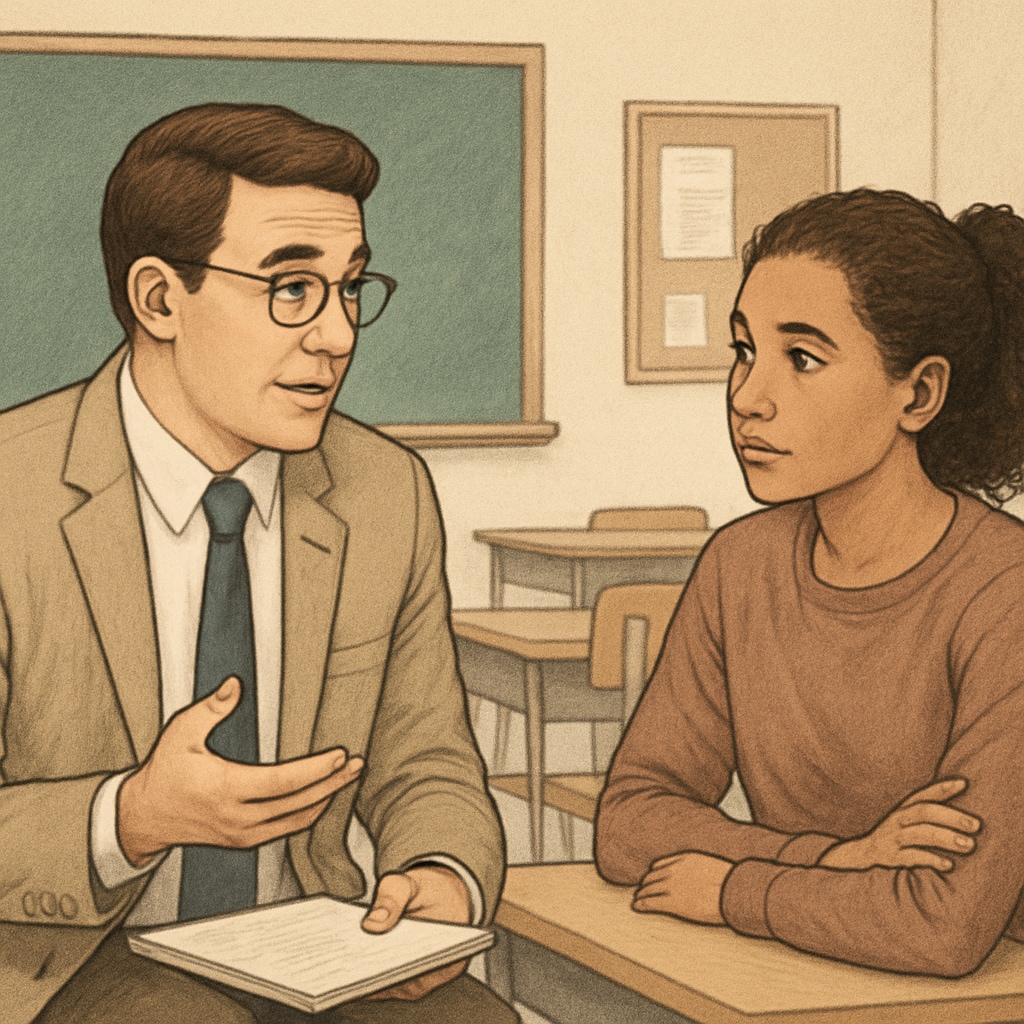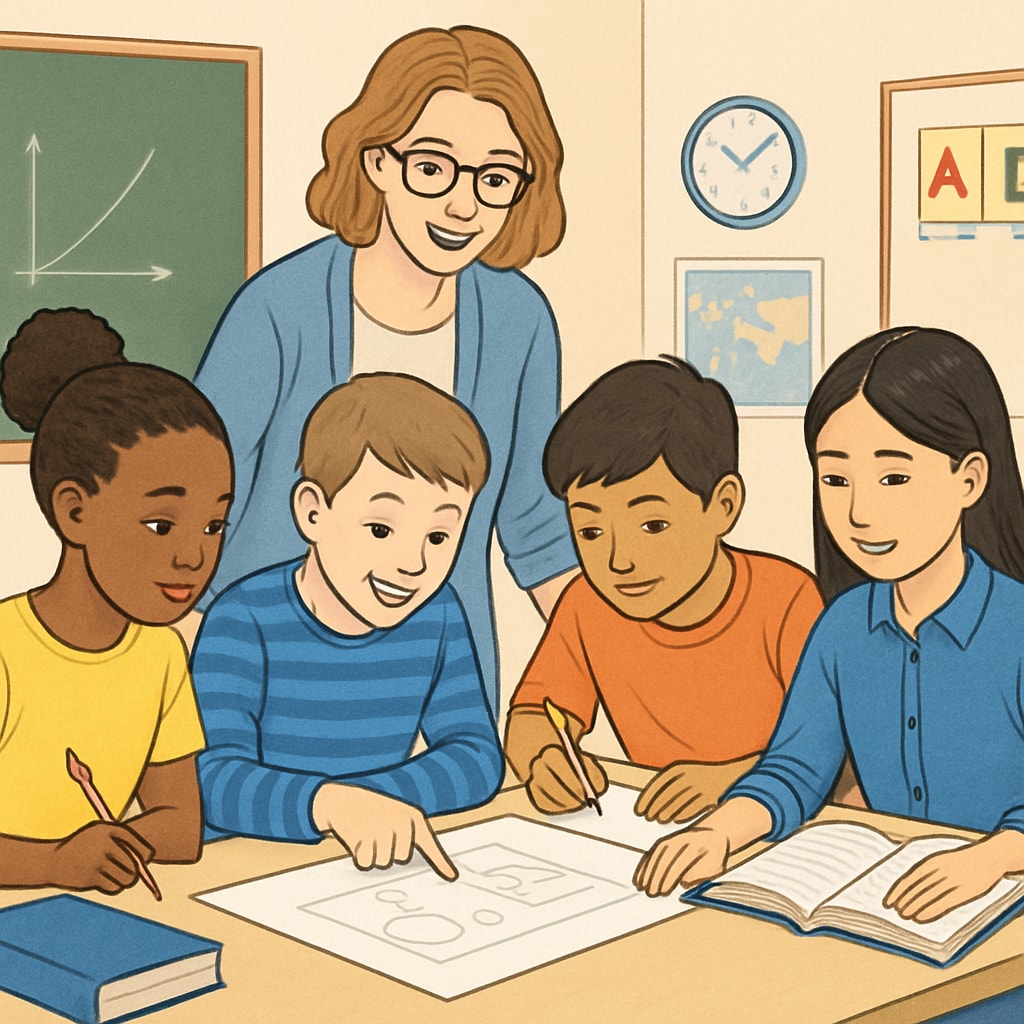In the ever-busy corridors of K12 education, moments of genuine connection can sometimes be overlooked. However, one student’s heartfelt expression of gratitude to their teacher illuminated the transformative power of teacher impact and classroom interaction. It was a simple yet profound “thank you,” spoken after class, that became a reminder of the deep significance of creating a respectful and engaging learning environment.
This article explores the rippling effects of such interactions, emphasizing the importance of being seen, heard, and valued in a classroom. It also offers insights into how educators can cultivate a space where both students and teachers thrive through meaningful exchanges.
The Transformative Impact of a Simple “Thank You”
On an ordinary school day, a student lingered after the bell had rung. Approaching the teacher with a shy yet purposeful expression, they said, “Thank you for taking the time to listen to me today. It really meant a lot.” While these words were brief, their sincerity was profound. For the teacher, this moment underscored the lasting impact of an interaction as simple as listening.
Teachers hold the unique ability to influence not just a student’s understanding of academic subjects but also their sense of self-worth. When students feel seen and heard, their gratitude often reflects an acknowledgment of this deeper connection. Research from Britannica highlights the importance of emotional intelligence in education, particularly in fostering trust and mutual respect in classrooms.

Creating Meaningful Teacher-Student Interactions
Authentic teacher-student interactions are foundational to a successful education system. When educators take the time to engage with students on a personal level—whether by addressing their concerns, acknowledging their efforts, or simply listening—it fosters a sense of belonging in the classroom.
Here are some actionable strategies to enhance these interactions:
- Active Listening: Ensure students feel heard by maintaining eye contact, nodding, and paraphrasing their thoughts to confirm understanding.
- Encouraging Open Dialogue: Create opportunities for students to express themselves without fear of judgment, such as through one-on-one meetings or anonymous feedback channels.
- Recognizing Individual Strengths: Acknowledge each student’s unique qualities and contributions to the class, reinforcing their value.
- Incorporating Empathy: Take the time to understand the challenges students may face outside the classroom, offering support when possible.
By making these efforts, teachers not only enhance academic engagement but also nurture personal growth in their students. As a result, classrooms transform into spaces where mutual respect and collaboration thrive.

The Long-Term Significance of Respectful Education
The impact of fostering respectful and warm teacher-student relationships extends far beyond a single classroom. In environments where students feel valued, their academic performance often improves, and they become more motivated to participate actively in their education. This aligns with findings from Wikipedia on effective classroom management, which emphasizes the role of positive interactions in reducing behavioral issues and promoting learning.
Moreover, these moments of connection can have lasting effects on students’ lives. A teacher who listens, respects, and encourages a student may shape the way that student perceives future authority figures, professional relationships, and even themselves. By modeling empathy and respect, teachers inspire students to cultivate similar qualities in their interactions, contributing to a more compassionate society.
For educators, receiving a heartfelt “thank you” from a student serves as a powerful reminder of their role in shaping not just minds, but also hearts. It validates their dedication and reaffirms the profound influence they have on the lives of their students.
Conclusion
In the story of the student who stayed behind after class to express gratitude, we see the essence of education distilled into a single moment: the power of being seen and valued. This act of appreciation highlights the deep impact teachers can have when they foster meaningful connections with their students. By prioritizing respect, empathy, and active engagement, educators can create classrooms that are not only places of learning but also spaces of inspiration and growth.
Ultimately, these moments remind us that education is not just about imparting knowledge—it is about building relationships, nurturing potential, and shaping futures. And sometimes, a simple “thank you” is all it takes to illuminate the true purpose of teaching.
Readability guidance: This article employs short paragraphs, clear transitions, and actionable strategies to ensure accessibility and relatability. Overarching themes of respect and empathy are reinforced throughout the content.


